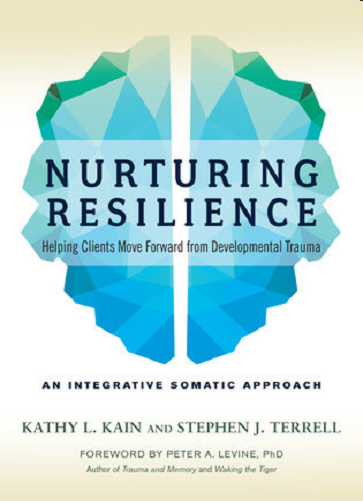|
In the first years of life, infants and toddlers need safe, predictable, accessible, and loving caregivers. In this environment the brain is able to develop in a healthy, normal sequence of growth.
The brain develops from the bottom upward. Lower parts of the brain are responsible for functions dedicated to ensuring survival and responding to stress. Upper parts are responsible for executive functions, like making sense of what you are experiencing or exercising moral judgement. Development of the upper parts depends upon prior development of lower parts. In other words, the brain is meant to develop like a ladder, from the bottom up. When stress responses (typically due to consistent neglect or abuse) are repeatedly activated over an extended period in an infant or toddler, sequential development of the brain is disturbed. The ladder develops, but foundational steps are missing and many things that follow are out of kilter. Understanding that early/developmental trauma upsets the entire development of the person and limits the person's ability to use imagination and perception. Their lives become focused on survival where the need to learn and develop socially, emotionally, spiritually, and cognitively become overridden by the need to survive. Erin Diedling interviews Dr. Stephen Terrell, PsyD, about creating new healing paths in the field of psychology through specific, safe & therapeutic touch. He details early developmental trauma and how it's different from shock trauma. He uses therapeutic touch to regulate the subtle phases of the nervous system and repair early baby wounds, neglect and trauma. He also discusses how healing touch brings about resilience.
“The most highly paced time of development in the human lifetime is the window between conception and three years of age. When we spend too much time during this window in a state of survival physiology, we are not building the neurophysiological architecture that will fully support regulation and connectedness. Knowing the extent to which our very early lives shape our neurological hardwiring, it makes sense that early, sometime forgotten disruptions in our development can dramatically alter the way we experience the world, ourselves, and others.” - Nurturing Resilience, p. 73
Kathy Kain's Site | http://www.somaticpractice.net/about/
Stephen Terrell's Site | https://www.austinattach.com/ |
CONSENSUS PROPOSED CRITERIA FOR DEVELOPMENTAL TRAUMA DISORDER by Bessel van der KolkA) Exposure. The child or adolescent has experienced or witnessed multiple or prolonged adverse events over a period of at least one year beginning in childhood or early adolescence, including:
Affective and Physiological Dysregulation. The child exhibits impaired normative developmental competencies related to arousal regulation, including at least two of the following:
Attentional and Behavioral Dysregulation: The child exhibits impaired normative developmental competencies related to sustained attention, learning, or coping with stress, including at least three of the following:
Self and Relational Dysregulation. The child exhibits impaired normative developmental competencies in their sense of personal identity and involvement in relationships, including at least three of the following:
Functional Impairment. The disturbance causes clinically significant distress or impairment in at two of the following areas of functioning: Scholastic: under-performance, non-attendance, disciplinary problems, drop-out, failure to complete degree/credential(s), conflict with school personnel, learning disabilities or intellectual impairment that cannot be accounted for by neurological or other factors. Familial: conflict, avoidance/passivity, running away, detachment and surrogate replacements, attempts to physically or emotionally hurt family members, non-fulfillment of responsibilities within the family. Peer Group: isolation, deviant affiliations, persistent physical or emotional conflict, avoidance/passivity, involvement in violence or unsafe acts, age-inappropriate affiliations or style of interaction. Legal: arrests/recidivism, detention, convictions, incarceration, violation of probation or other court orders, increasingly severe offenses, crimes against other persons, disregard or contempt for the law or for conventional moral standards. Health: physical illness or problems that cannot be fully accounted for physical injury or degeneration, involving the digestive, neurological (including conversion symptoms and analgesia), sexual, immune, cardiopulmonary, proprioceptive, or sensory systems, or severe headaches (including migraine) or chronic pain or fatigue. Vocational (for youth involved in, seeking or referred for employment, volunteer work or job training): disinterest in work/vocation, inability to get or keep jobs, persistent conflict with co-workers or supervisors, under-employment in relation to abilities, failure to achieve expectable advancements. Brains: Journey to ResilienceIn a world where human brains inch across snowy landscapes, where perils lurk in every shadow, one community will rally behind a struggling brain—and just might change the world in the process. Learn about the resilience scale in this scientifically rigorous (and cinematically epic) video created by the Alberta Family Wellness Initiative in consultation with the FrameWorks Institute and the Harvard Center on the Developing Child.
Additional Resources |
